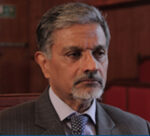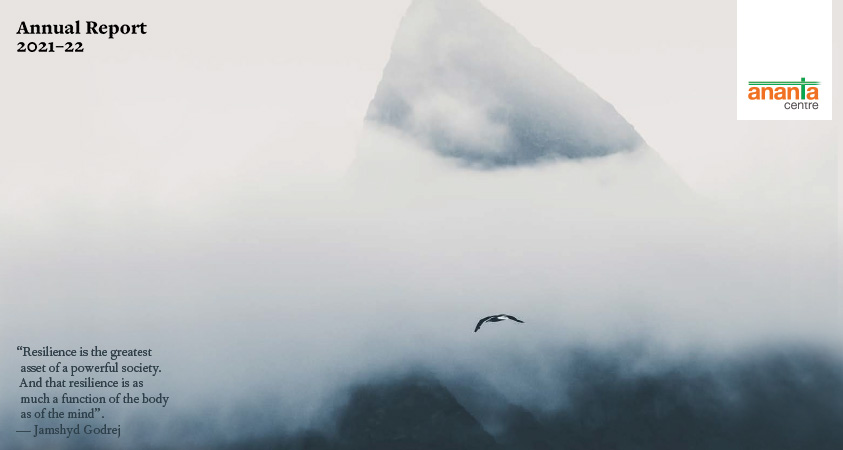Political Developments
On 19 November Argentina voted in Javier Milei as President. With a clear lead of 12 points over his opponent Sergio Massa of the ruling Peronist alliance, the electorate has reposed faith in the radical “libertarian” candidate of Libertad Avanza (Liberty Forward) party. Nowhere on the horizon till this year, the economist and former television commentator, a self-described “anarcho-capitalist” took the reins of the blighted country on 10 December. His Vice President, Ms. Victoria Villarruel is a staunch defender of Argentina’s 1976-83 military dictatorship. Milei, who lost the first round to Sergio Massa, walked back several of his radical campaign promises in an effort to win over centrist voters. Endorsement after the first round by former president Mauricio Macri and Patricia Bullrich, the candidate for centre-right coalition Juntos por el Cambio (JxC), who was eliminated in the first round, helped swing more conservative voters towards him. In return their candidates have found room in his government. He was warmly congratulated by Donald Trump, who claimed Milei would ‘Make Argentina Great Again’.
Milei will find it harder governing Argentina than he did winning the election, given that Milei’s political faction has around ten percent of the seats in Congress.. Economic conditions have got worse, hard to believe considering the levels of poverty and unemployment prevailing in recent times. The Argentine peso, officially pegged at 350 to the dollar sank to 900 on the black market. The desperation among the population is so high that seemingly absurd campaign promises have been taken in stride by a majority of voters looking for change at any cost. In his first act after swearing in, Milei devalued the Argentina peso about 60 percent to 800 to the USD, while his Cabinet revoked fuel subsidies and some projects, and announced plans to privatise public companies “…everything that can be in the hands of the private sector…” and public media outlets. These moves were lauded by the US and the IMF. The number of ministries was also reduced from 18 to 9 and export taxes hiked massively.
Milei brings with him a hope of resurgence for the right in Latin America, which has been challenged all over the region by a more self-confident left, even in right wing bastions like Colombia. On foreign policy, Milei has declared he is “an ally of the United States, Israel, and the West”. Argentina abstained on the UNGA vote calling for an immediate humanitarian ceasefire in Gaza on 12 December, when all major LAC countries voted in favour. Guatemala and Paraguay voted against while Venezuela was absent. Argentina was among six countries selected to join the BRICS in South Africa earlier this year, and received an invitation from China’s president to do so from 1 January. On 29 December however, Milei sent a letter to the original BRICS members, including India, rejecting the invitation, which the letter claimed was “not considered appropriate at this time”, claiming that his foreign policy “differs from that of the previous government…”
On 2 December, Venezuela voted overwhelmingly, albeit with low attendance, in a referendum to exercise its rights to take back the territory of Essequibo, approximately 160,000 square kms, currently recognised almost universally as part of neighbouring Guyana. Two-thirds of Guyana, it has been claimed by Venezuela as Guyana Essequiba since the 19th century when it was part of British Guiana. In 1899 a tribunal – whose decision Venezuela did not recognise – awarded most of it to Guyana. After Guyanese independence in 1966 and subsequently, the issue was taken up in the UN. Former Venezuelan President Hugo Chavez, in an attempt to woo the neighbour, had put the issue aside earlier this century. The matter was referred to the International Court of Justice by Guyana which in 2020, despite opposition from Venezuela, heard the case and on 30 November ruled that Venezuela should take no action till the final ruling.
After the referendum, President Maduro cranked up his nationalist agenda, created a military division on Venezuela’s border with Guyana and formed subsidiaries of the national oil and other resource exploitation companies to grant hydrocarbon and mining licences in the region. With US companies involved in oil exploitation in Guyana, the US and the British navies joined the Guyanese in patrolling offshore to ward off potential Venezuelan attacks. Under pressure from regional powers like Brazil, Maduro met with Guyana President Irfaan Ali in St. Vincent and the Grenadines on 14 December. The talks were facilitated by the CARICOM. The summit ended with a declaration not to use force, to resolve the dispute “in accordance with international law” and set up a committee headed by foreign ministers of both countries to discuss further.
The referendum had two motives:- Guyana, known to be rich in minerals and natural resources, including in Essequibo, has started exploiting massive reserves of oil and gas in waters Venezuela claims as part of its claim on Essequibo. Venezuela’s own production has stagnated, largely due to the sanctions levied by the US and scanty investment. The other is the current political scenario, in which Venezuelan President Nicolas Maduro will need to hold a free and fair election in 2024 – which he will probably lose to the opposition – if he wants the US to continue lifting sanctions imposed in 2020. The referendum also served to target some opposition leaders who have been accused of supporting Guyana.
On 17 December Chile voted in a plebiscite on a new draft constitution. Voters rejected the text by 56 percent to 44 percent. The second draft, presented after the first was rejected in a plebiscite in 2022, was oriented away from the radical proposals of the first, which had recognised the plurinational nature of Chile and had many clauses that would fundamentally alter the nature of the political economy. Presented in December by a Constitutional Council dominated by the political right, it controversially retained most of the features of the current constitution. The result has left Chile with the 1980 constitution of the Pinochet dictatorship era. It appears no further attempts will be made for a new constitution, leaving the Chilean electorate polarised and the government helpless in effecting much-desired political and social reform.
On 3 November US President Joe Biden hosted Latin American and Caribbean leaders at the Americas Partnership for Economic Prosperity (APEP) summit in Washington, D.C. APEP, a U.S.-led forum aiming to bolster regional competitiveness and mobilize investment, was announced by Biden at the Summit of the Americas in Los Angeles in June 2022. In Biden’s words the summit sought to “Increase opportunity and decrease inequity; to harness the incredible economic potential of the Americas; and to make the Western Hemisphere the most economically competitive region in the world….”
The summit did not make global headlines because it seemed like another of the initiatives the US has been launching periodically to narrow the gap with its southern neighbours and attempt programs that may address the root causes of poverty that lead to migration northward, while offering an alternative to the Chinese juggernaut that continues to roll over LAC. Earlier projects such as President Clinton’s Free Trade Area of the Americas, which was a non-starter, and President Obama’s New Partnership for the Americas, which had limited success, revealed the shortcomings of the US approach. US priorities – curtail migration, contain the drug trade, compete with China – are not congruent with those of its southern neighbours. It has lost ground in the Washington-based, hemisphere-wide Organisation of American States, where LAC delegations have been increasingly assertive as the left gains ascendance south of the Rio Grande. The summit revealed the US’s reduced role in the region. In attendance were heads of state of the original nine countries included in the Partnership: Barbados, Canada, Chile, Colombia, Costa Rica, the Dominican Republic, Ecuador, Peru and Uruguay. Mexico and Panama were represented at lower level. Brazil did not attend, citing the absence of Argentina and several countries of the region.
On 19 November, Nicaragua left the Organisation of American States, having given notice of its intention in 2021. President Daniel Ortega’s regime has been targeted by successive OAS resolutions after civic protests broke out in 2018, followed by an election in which Ortega’s opponents were jailed and the regime tightened its stranglehold. Cuba had been expelled from the OAS at US instance in 1960 and refused to rejoin when invited back earlier this century. Venezuela also left after considerable criticism of the regime of Nicolas Maduro. Nicaragua continues to be a member of specialised organs of the OAS, including the Inter-American Court of Human Rights and the Inter-American Bank located in Washington DC. It is also a member of the CAFTA, a free trade agreement between seven Central American countries and the US, which could pressure the Ortega regime over treaty obligations, especially on labour rights. Nicaragua’s foreign policy has veered towards Russia, China, Iran and other anti-US states, but its trade is heavily weighted towards the north. The bloc of hard-left countries has been somewhat isolated from the LAC mainstream, mostly the result of their domestic politics and refusal to adhere to consensual democratic norms. The rest of the region has broadly accepted the need to recognise democratic expression, though several regimes leverage electoral success to tighten control over the polity. Cuba, Nicaragua and Venezuela seem to have painted themselves into a corner, though recent developments may enable Venezuela to regain some form of international standing if it holds elections in 2024 in accordance with a US-brokered agreement with its opponents. Within LAC there is little support for Nicaragua. Brazil and Mexico seem reluctant to openly chastise the Ortega regime though Chile and Colombia, also run by left-wing governments, have shown less sympathy.
Paraguay, one of the last remaining countries in Latin America to have severed ties with Venezuela, resumed diplomatic relations after President Santiago Pena spoke with his Venezuelan counterpart, Nicolas Maduro on 15 November: “Both parties committed themselves to resuming bilateral relations with full respect for the fundamental principles of equality of rights, self-determination of peoples, non-interference in the internal affairs of other States and solidarity; also based on the principles of Latin American integration and unity,” a statement from the Foreign Ministry in Asunción read. Paraguay’s new President since May, Pena wants to “de-ideologise” the relationship after the recent US backed initiative resulted in an agreement between the Maduro regime and the Venezuelan opposition. Normalisation will also give Paraguay access to cheaper Venezuelan oil.
Economic Developments:
MERCOSUR: The Southern American Common Market, formed in 1985, held its summit in Brasilia on 7 December, where Brazil handed over the presidency to Paraguay. Days before, Brazil’s Senate ratified the full membership of Bolivia into the grouping. Current associate members are Chile, Peru and Colombia. Mercosur has seen considerable volatility internally and externally. Highly protectionist, its smaller members – Uruguay and Paraguay – resent the domination of Brazil and Argentina and their lack of freedom to negotiate trade deals independent of the bloc. Newly elected President of Argentina, Javier Milei has openly expressed his contempt for the grouping, though Argentina has been the most protectionist member of Mercosur for decades.
As a group Mercosur has had difficulties opening foreign markets. At the summit in Brasilia, a free trade agreement was signed with Singapore but an agreement with the EU, under negotiation for 20 years, seems to be on ice, with contrary opinions from France on the issues of the Mercosur commitments to deforestation, etc. and the South Americans decrying European protectionism. Approved in 2019, after 20 years of negotiations, the Mercosur-EU agreement needs to be ratified by the parliaments of all the countries in the two blocs in order to enter into force. The negotiation involves 31 countries. It covers both tariff and regulatory issues, such as services, public procurement, trade facilitation, technical barriers, sanitary and phytosanitary measures, and intellectual property.
Soon after President Lula visited Saudi Arabia, Brazil announced that from 1 January 2024 it would become the 24th partner of the OPEC+ grouping formed in 2016. Of LAC countries, only Venezuela is a member of the OPEC cartel, Ecuador having left it in 2020. OPEC+, an expanded version of the original Organisation of Petroleum Exporting Countries formed in 1960 and expanded thereafter, includes Mexico as well from LAC. This alliance accounts for almost 40% of the world’s crude oil supply and is deeply involved in output readjustments to stabilize global prices. Brazil’s current oil production, at approximately 3.67 million barrels per day, is higher than that of Venezuela and Mexico. India imported almost $ 2 billion of crude oil from Brazil in 2022-23.
President Lula was present at the Dubai COP28, along with the President of Paraguay and the Foreign Minister of Chile. Together with the representatives of Argentina and the UAE, they witnessed the signing of The “Joint Declaration on Cooperation linked to the Bioceanic Corridor”. Founded on an agreement signed in December 2015 by Brazil, Argentina, Paraguay and Chile, the project involves surface linkages from the Brazilian port of Santos on the south Atlantic coast to the northern Chilean ports on the Pacific coast, cutting through Paraguay and Argentina. The project replaces a similar project promoted by Bolivia in 2013, with Chinese backing, to connect Santos with the southern Peruvian port of Ilo, passing through Bolivia. The Bioceanic Corridor, backed by UAE, will shorten the distance between the Pacific and the Atlantic by 8000 miles, providing an alternative for the four southern American economies to the Panama Canal further north and Cape Horn in the south. Chile’s more efficient and less encumbered ports, and its free trade network, will enable Argentina and Paraguay access markets in Asia for their agri-exports. The road and rail project is estimated at 2250 kms.
Focus India LAC:
With US sanctions on Venezuela’s oil exports easing, India has begun to tap this important source of crude oil. Reliance Industries Ltd. (RIL) booked 3 tankers, each with capacity of 270,000 tons, for deliveries of Venezuelan crude in December and January. IndianOil and HPCL-Mittal have also placed orders for Venezuelan crude and public sector BPCL is also in line. The last delivery of Venezuelan crude was in November 2020. Venezuela was the fifth largest supplier of crude oil to India in 2019, at 16 million tons mainly imported by private sector refineries RIL and Nayara. After imposition of sanctions, China was overwhelmingly the largest buyer of Venezuelan crude. Reliance, whose Jamnagar refinery processes heavy Venezuelan crude, is expected to avail of the discounted prices from this supply, though Nayara, part owned by Russia’s Rosneft, is expected to continue with Russian oil. Public sector Indian refiners will examine Venezuela as an option, especially since outstanding Venezuelan dues to ONGC (Videsh) Ltd. close to $500 million are still to be settled.
The previous issues of Latin America & Caribbean Review are available here: LINK























